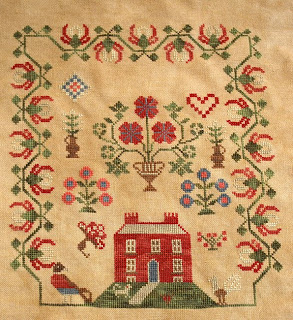Goodbye to Lark Rise
What a pleasure to spend my summer at Lark Rise. Lark Rise is the fictional name of the hamlet of Flora Thompson’s childhood. Who is Flora Thompson? She was an Englishwoman, wife and mother of three children. I invite you to read her biography online. She never attended high school, married early and loved to read. In the last decade of her life she wrote an account of her childhood (1880-1890s) in three volumes. Today these volumes are published as, Lark Rise to Candleford – A Trilogy.
Unlisted
Lark Rise to Candleford isn’t found on a list of important autobiographies. Criticized for having no plot you won’t find it on a list of great novels, either. It is, however, a minor classic. With no bloody crime, deep remorse, nervous suspense, fast action, hanky-panky or any other worrisome conflict, many will find its pages a refreshing change of pace.
BBC Series
Dean and I were browsing a bargain bookstore when I came across it. Reading the back cover I thought, “This sounds lovely. I’ve never heard of this before.” A year later my book was still unread. It was packed in a box for our household move. The next winter the BBC television series “Lark Rise to Candleford” was being aired. I had remembered the title of my unread book and went searching for it. Yes, it was the same author on which the series was based.
Flora is Laura
For the sake of entertainment the story plots of the TV series were invented. Without the stories what’s left? You might be wondering. Descriptions of the end of an era, of a way of life in England that was crumbling away to make room for modern conveniences, assembly line manufacturing, mass transportation, prepackaged food products, etc. Flora remembers what life in the 19th century was like. Calling herself “Laura” she describes it all by way of a cherished memory.
Neat and Tidy Poor People
I can clearly see the “poor people’s houses” and where Laura lived in the “end house.” I can see Laura’s parents, siblings, neighbors, the clothes they wore and the work they did. I can hear the children’s songs (she supplies the words) and outdoor games. I can smell her mother’s stew simmering on a wood burning stove in the stuffy atmosphere of their tiny cottage swept spotlessly clean and yet so meagerly furnished and so dimly lit by its few windows.
A Country Neighborhood
Nature surrounded the hamlet and was always changing. Laura, in childlike newness, takes in all the beauty of the plowed fields, the meadows, woodlands, birds, and wildflowers, missing none of their charms. Much of her time was spent outdoors in the fresh air keeping watch over her younger sisters and observing the goings-ons of the tight little hamlet.
A Village Post Office
At sixteen Laura was sent to work in the post office with Miss Lane in the village of Candleford Green eight miles from her home. She visits her relatives and describes a whole village of characters she gets to know during post office hours and outside them. Through the eyes of the “growing up” Laura we become privy to her social commentary.
(The brown building to the right is a British post office one hundred years ago.)
In No Rush
I was in no rush to say goodbye to Lark Rise. Now that I’m finished I feel I’ve been left with a possession. I know something about the world I didn’t know before. I’d like to think that looking at life through the eyes of another has enlarged my sympathies. I would have read aloud portions of Lark Rise to my highschoolers had I known about it then. Alas, this is another book they’ll have to pick up themselves.
A click on Lark Rise will take you to CBD.
A click on Lark Rise will take you to CBD.
A Bone to Pick
The BBC series adds mysticism and makes the country folk out to be far more superstitious than Flora Thompson ever implies. One Christian character is ludicrous. In her writings Flora (an Anglican) shows respect for Christian, non-Christian, conservative and liberal alike.
Until next time,
Karen Andreola
Until next time,
Karen Andreola























